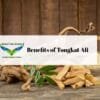No products in the cart.

Kratom has gained popularity in recent years for its potential benefits; however, many users may develop tolerance with regular use. This article provides effective strategies to manage and control kratom tolerance, allowing individuals to enjoy its effects without the need for constant dosage increases. By understanding the factors that contribute to tolerance and exploring practical solutions, users can maintain a healthier relationship with this unique herb.
Understanding Kratom Tolerance: Key Concepts Explained
Kratom tolerance is important for users seeking to understand their experience with this herbal supplement. Over time, regular consumption can lead to diminished effects, requiring higher doses to achieve the desired results. This occurs as the body adapts to the active compounds in kratom, primarily mitragynine and 7-hydroxymitragynine.
It is crucial for users to recognize that developing tolerance may also increase the risk of adverse effects and dependency. To mitigate this, many suggest implementing breaks or cycling usage patterns to allow the body to reset its response to kratom. Understanding tolerance is essential for anyone looking to use kratom safely and effectively, ensuring a balanced approach to its benefits while minimizing potential drawbacks.
The Science Behind Kratom Tolerance Development
Kratom, a tropical tree native to Southeast Asia, is known for its potential pain-relieving and mood-enhancing properties. However, regular use can lead to tolerance, where increasing doses are needed to achieve the same effects. This phenomenon results from the body’s adaptive mechanisms, particularly the downregulation of opioid receptors in response to kratom’s active compounds.
As users consume kratom, their bodies may become less sensitive to these compounds, diminishing the desired effects. Genetic factors and individual biochemistry also contribute to how quickly tolerance develops. Understanding these mechanisms is essential for safe usage, as it helps users manage their intake and avoid potential dependency.
Signs That Indicate Increased Kratom Tolerance
As kratom’s popularity continues to rise, users should be aware of the signs indicating increased tolerance. A significant indicator is the need for larger doses to achieve previous effects. Users may also notice a reduced response to their typical dosage, where the sense of euphoria or pain relief becomes less pronounced.
Additionally, individuals may find themselves using kratom more frequently to maintain desired effects, leading to a cycle of increased consumption. Mood swings or irritability when not using kratom may also signal tolerance development. Recognizing these signs is crucial for responsible use and ensuring a safe experience with this herbal supplement.
Importance of Managing Kratom Tolerance Effectively
Effectively managing kratom tolerance is essential for users seeking to maintain the benefits of this herbal supplement. As regular consumption can lead to increased tolerance, users may need higher doses to achieve the same effects, which can pose risks of dependence and adverse side effects.
Implementing strategies such as rotating strains or taking breaks can help reset tolerance levels. This not only enhances the overall experience but also promotes safer use. A responsible consumption approach fosters a more sustainable relationship with kratom, maximizing its potential benefits while minimizing risks.
Strategies for Reducing Kratom Tolerance Over Time
Reducing kratom tolerance requires a strategic approach to maintain its effectiveness. One effective method is to cycle use by alternating periods of consumption and abstinence, allowing the body to reset its response to kratom’s active compounds. Additionally, using lower doses during consumption can help minimize tolerance buildup.
Staying hydrated and maintaining a balanced diet supports overall well-being and can enhance kratom’s effects. Exploring different strains may provide varied effects and reduce the likelihood of developing tolerance. Lastly, keeping a journal to track usage and effects can help identify patterns and facilitate necessary adjustments.
The Role of Dosage in Kratom Tolerance Management
Kratom, derived from the leaves of the Mitragyna speciosa tree, is recognized for its potential effects on pain relief and mood enhancement. However, users can develop tolerance over time, leading to diminished effects and increased consumption. Managing dosage is crucial in mitigating tolerance.
Adhering to lower dosages or incorporating breaks helps maintain kratom’s efficacy. For instance, taking smaller amounts less frequently can prevent rapid adjustments by the body to the substance. Additionally, rotating strains may provide varied effects, aiding in tolerance management.
Understanding the importance of dosage empowers users to optimize their experiences while minimizing potential risks. Responsible usage and awareness of dosage significantly contribute to sustaining the benefits of kratom over time.
Timing Your Kratom Consumption for Better Results
Timing kratom consumption can significantly enhance its effects and benefits. To achieve optimal results, consider the time of day and individual schedules. Many users find that taking kratom in the morning boosts energy levels and improves focus throughout the day, while evening consumption promotes relaxation and alleviates stress after long days.
Paying attention to how the body responds to different strains and dosages at various times is essential. Experimenting with timing allows individuals to tailor their experiences to maximize the benefits of kratom. Additionally, consistent timing can lead to more predictable effects, aligning with lifestyle commitments and facilitating rewarding experiences.
Herbal Alternatives to Help Lower Kratom Tolerance
While kratom is favored for its stimulating and pain-relieving properties, some users may seek alternatives due to increased tolerance over time. Herbal options, such as turmeric and ginger, are recognized for their anti-inflammatory benefits and potential to enhance overall well-being.
Rhodiola rosea, an adaptogen, helps the body adapt to stress, potentially reducing dependence on kratom. Additionally, valerian root may promote relaxation and improve sleep quality, contributing to a balanced approach in managing tolerance. Passionflower may also offer a natural way to soothe anxiety, counteracting kratom’s stimulating effects.
Incorporating these herbs into a routine may serve as a pathway to reduce tolerance while sustaining desired benefits.
The Impact of Regular Breaks on Kratom Tolerance
Regular breaks from kratom consumption can significantly influence tolerance levels, offering users a chance to reset their body’s responses to active compounds. Continuous use often leads to diminished effects, prompting users to increase their dosage for desired results. Scheduling breaks allows for a restoration of sensitivity to kratom, enabling more effective and enjoyable experiences with lower doses.
This practice not only helps mitigate the risk of dependence but enhances the overall benefits of kratom. Taking time off also provides an opportunity for reflection on usage patterns and motivations, fostering a healthier relationship with this herbal supplement. Understanding the importance of breaks empowers users to make informed decisions about their kratom use.
Importance of Staying Hydrated While Using Kratom
Staying hydrated while using kratom is crucial for maintaining overall health and maximizing the plant’s potential benefits. Kratom can lead to dehydration if not balanced with adequate water intake. Proper hydration alleviates potential side effects, such as headaches and fatigue, which users may experience.
Additionally, water aids in the efficient metabolism of kratom, ensuring the body can process its active compounds effectively. By drinking enough fluids, users enhance their experiences, promote better digestion, and support their body’s natural functions. Prioritizing hydration is essential for a more enjoyable and beneficial kratom experience.
How Nutrition Influences Kratom Tolerance Levels
Nutrition plays a crucial role in influencing kratom tolerance levels, affecting how the body metabolizes this popular herb. A balanced diet rich in vitamins, minerals, and antioxidants can enhance overall health and support the body’s natural processes. Foods high in antioxidants, such as berries and leafy greens, may reduce oxidative stress, benefiting kratom users.
Adequate hydration and proper intake of healthy fats, like omega-3 fatty acids, improve cellular function, potentially resulting in better kratom absorption and efficacy. Conversely, a diet high in processed foods and sugars may negatively impact tolerance levels, leading to inflammation and unhealthy gut flora.
Incorporating nutrient-dense foods can promote a healthier relationship with kratom and possibly mitigate tolerance development.
Exploring Cross-Tolerance with Other Substances
Exploring cross-tolerance with various substances reveals interactions that significantly impact users’ experiences. Cross-tolerance occurs when exposure to one substance diminishes the effects of another, often due to shared pathways in the brain. For instance, regular alcohol consumers may find their response to benzodiazepines reduced, leading to potential underestimation of the latter’s effects.
Understanding cross-tolerance is essential for healthcare professionals, as it can inform treatment plans and reduce risks of adverse effects. As research continues, considering these interactions becomes crucial, highlighting the complexities of substance use and the need for personalized approaches in both clinical and recreational settings.
Psychological Factors Affecting Kratom Tolerance
Psychological factors significantly impact kratom tolerance, as individual mental states and experiences shape bodily responses to the substance. Users experiencing high stress or anxiety may develop tolerance more quickly due to their increased need for relief.
This psychological dependence can lead to increased consumption, altering the brain’s reward pathways and creating a cycle of escalating use. Personal beliefs about kratom’s efficacy can also influence tolerance levels; those viewing it as a necessary coping tool may push their limits, accelerating tolerance unwittingly.
Understanding these psychological dynamics is essential for users to manage intake responsibly and mitigate potential risks associated with kratom use.
Using Kratom Responsibly to Avoid Tolerance Issues
Using kratom responsibly is crucial to avoid developing tolerance issues. To maintain its efficacy, users should implement strategies such as cycling intake, limiting use to a few days per week, and varying the strains consumed.
Staying hydrated and maintaining a balanced diet can enhance the overall experience while reducing the risk of dependency. Listening to one’s body and being mindful of changes in effects are vital. By approaching kratom with caution and respect, users can enjoy its benefits while minimizing the likelihood of tolerance.
The Benefits of Tracking Your Kratom Usage Patterns
Tracking kratom usage patterns can provide numerous benefits that enhance the overall experience and well-being. Maintaining a detailed record of dosages, consumption times, and subjective effects allows individuals to identify optimal strains and amounts for their needs. This personalized approach aids in managing tolerance levels and preventing potential side effects.
Moreover, tracking usage fosters mindfulness, encouraging conscious engagement with the wellness journey. It leads to better decision-making, ensuring that users remain informed about their habits and impacts. Ultimately, maintaining a log of kratom usage empowers individuals to make adjustments that can result in more effective and satisfying results.








One comment
Pingback:
Southeast Asia Kratom Leaf Storms 2025 - Nature's One Kratom : Indonesia Kratom Supplier